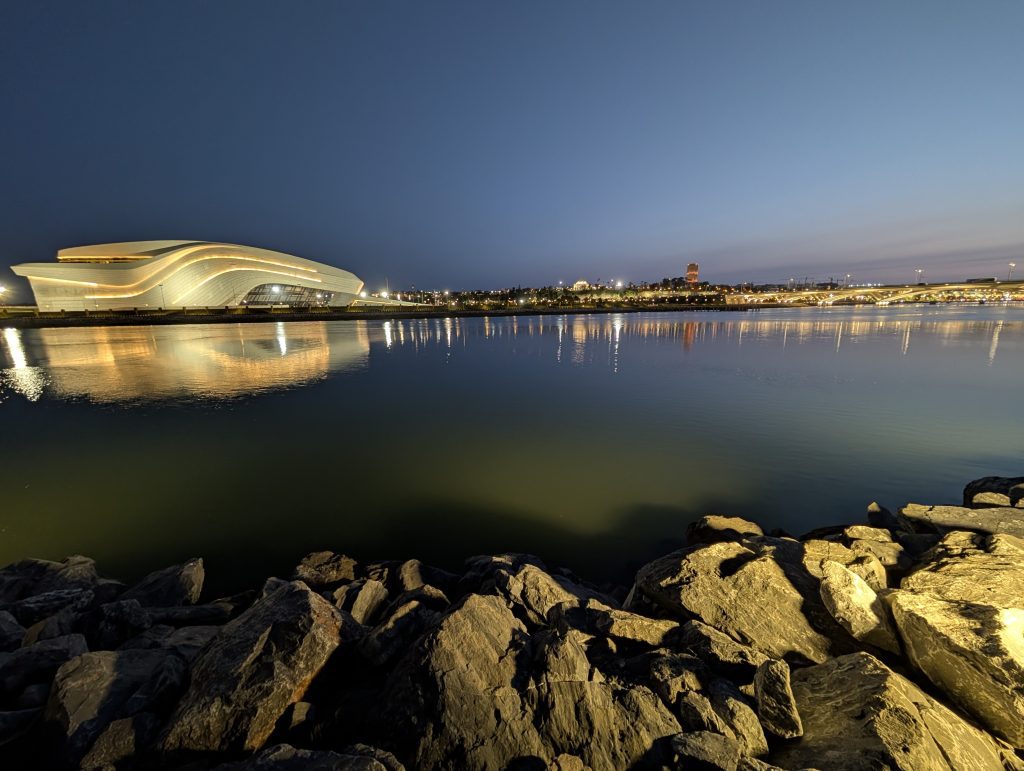My flight to Casablanca was uneventful, flying on American Airlines through Charlotte and Washington Dulles.
Our Gate1 tour starts in Rabat, not in Casablanca. We planned to arrive a day early to acclimate to the time change. There is less of interest to visitors to see in Casablanca so we arranged our own transportation and lodging in Rabat area, actually in its sister city of Sale across the river.
I took a train to Sale from the Casablanca airport. The only challenge was figuring out which stop to get off at. My hotel sent a taxi who was waiting for me outside the train station. Pat was not as fortunate. Her flights were a mess and she arrived 12 hours late and had to take a $90 taxi ride from the airport to our lodging in the old city Sale.
I had booked a riad in the Medina of Sale, sister city across the river from the capital city of Rabat. A riad is a traditional Moroccan home with the rooms facing into a garden or courtyard. They are typically located in the old part of the cities. If I were to travel to Morocco again, I would book all my stays in these lovely inns. The Repose Riad was lovely with a beautiful lounge area and a rooftop where breakfast was served. Each room is unique, ours had a blue theme and was decorated with traditional fabrics, tiles and furniture.
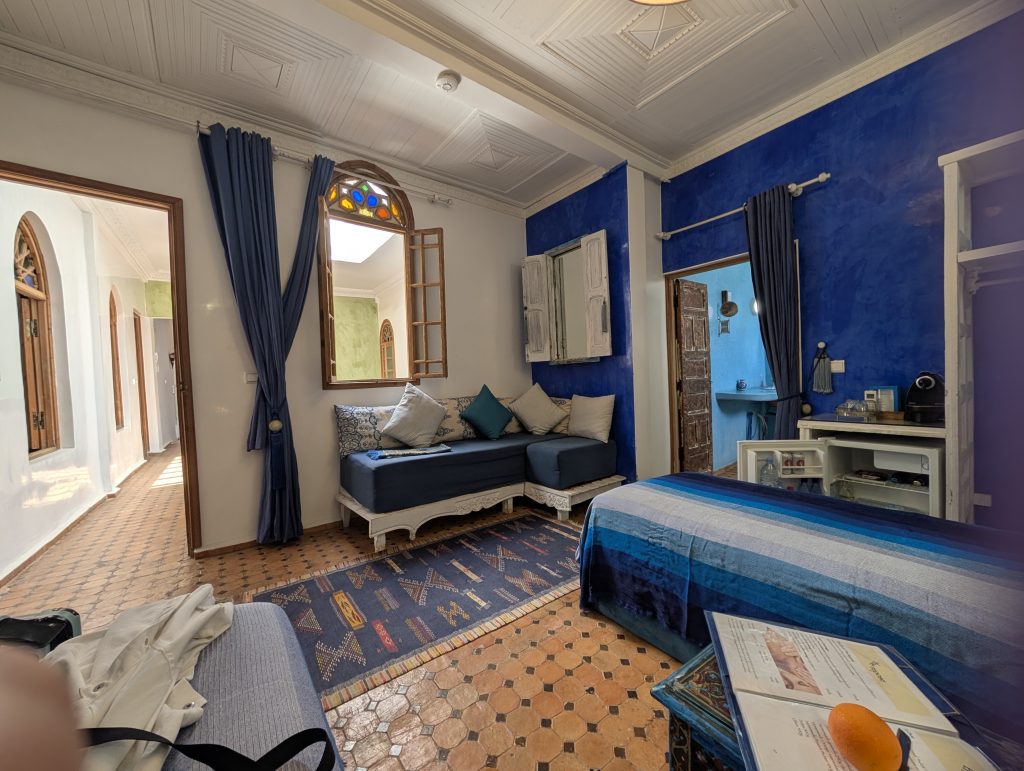
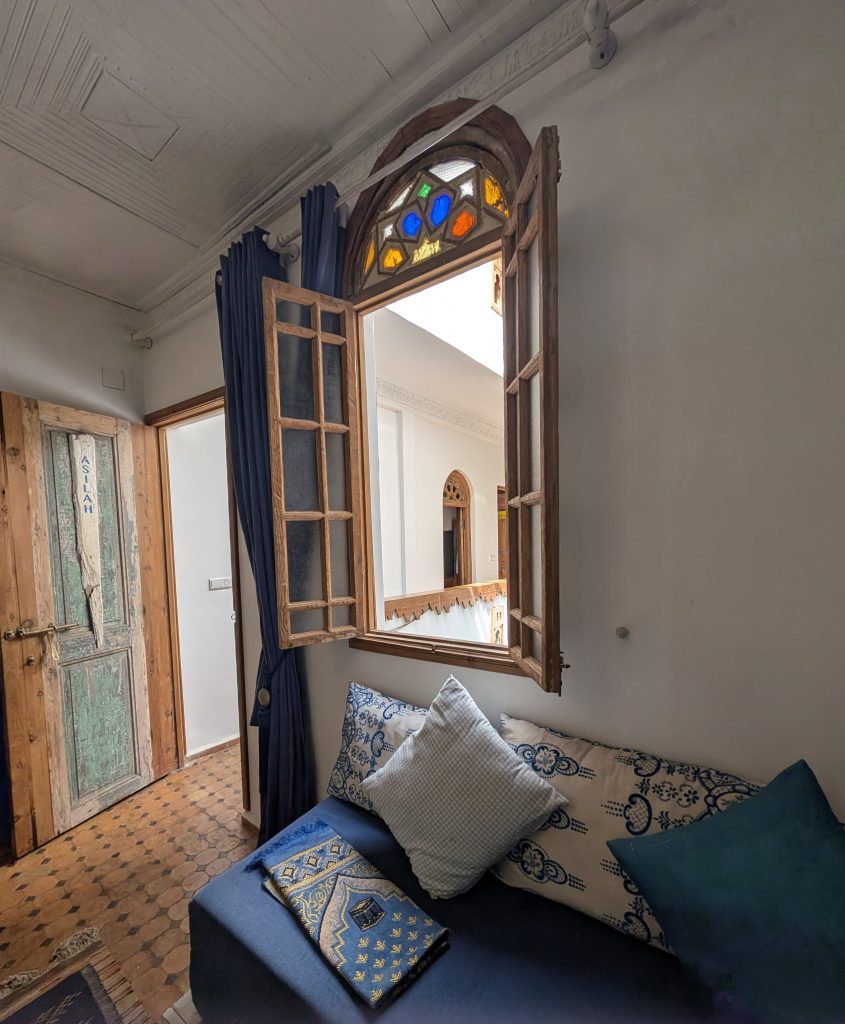
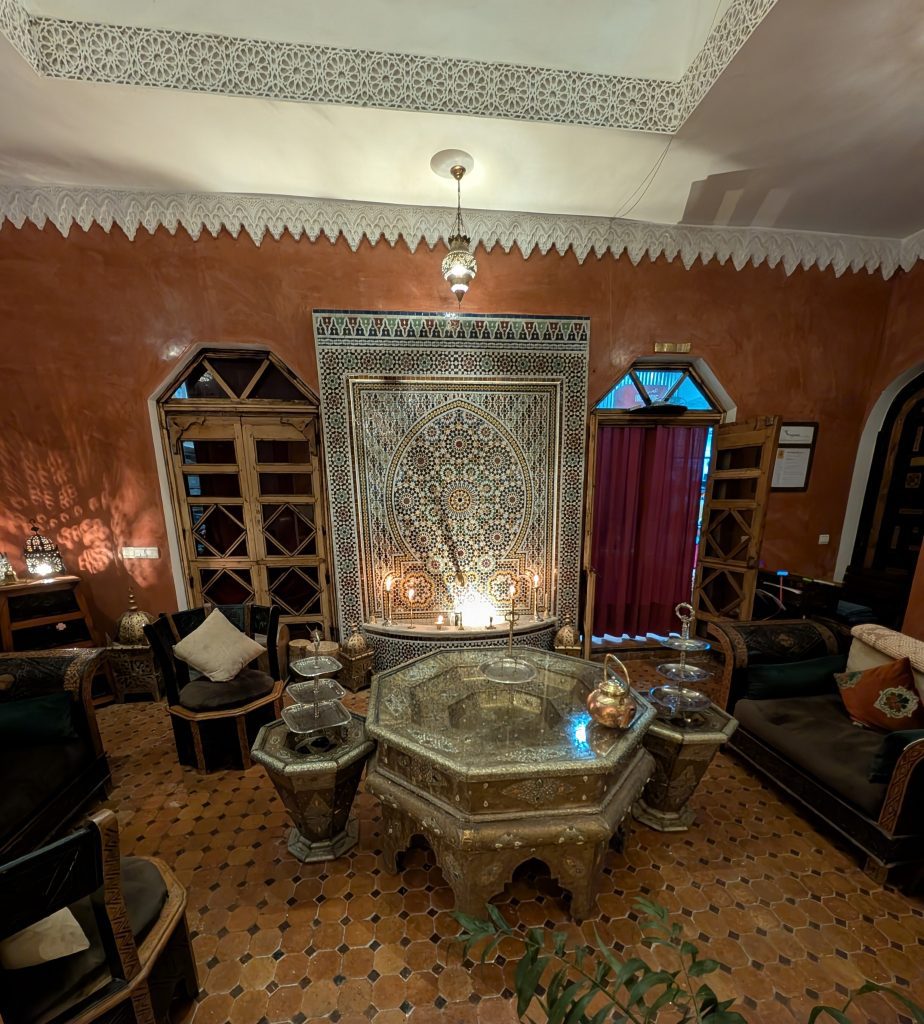
I spent my first afternoon just wandering through the Sale Medina. Things were fairly quiet on a Thursday afternoon. I saw mostly locals and many women escorting their children home from school, almost no tourists.
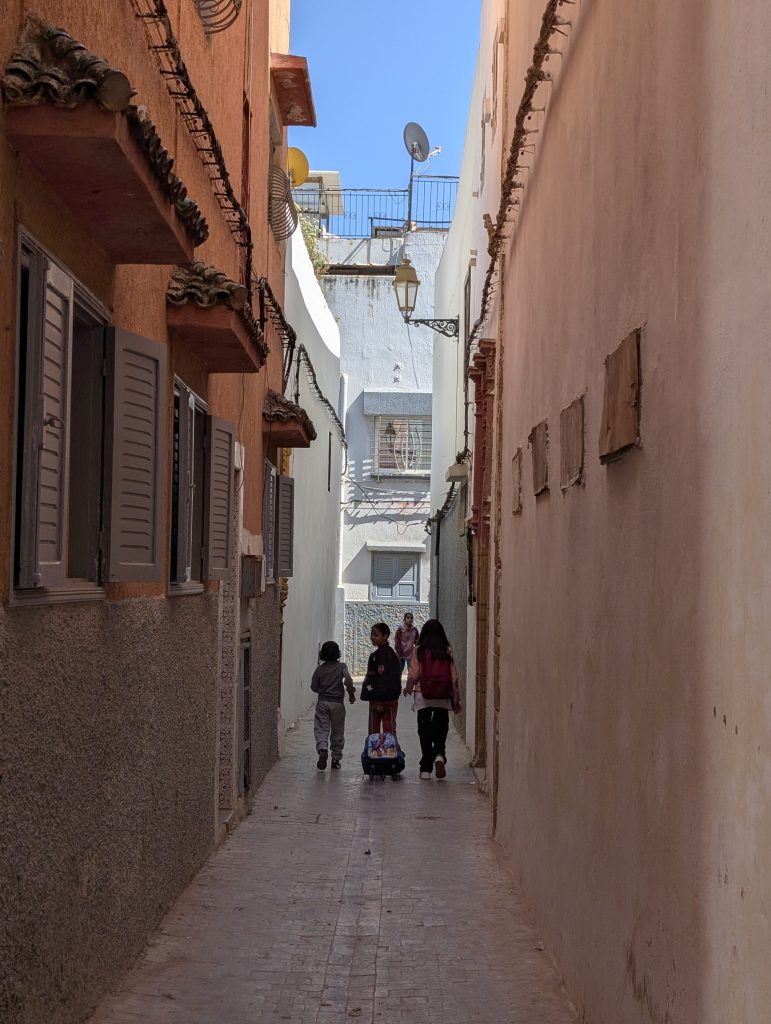
Nearby was the famous Medursa About Al Hassan, formerly a religious school dating back to the early 14th century. The building is no longer used but remains open for visitors and to extract a little money from tourists. It’s located next to the Grand Mosque which is not available to non-Muslim visitors. The building is decorated in tiles on every surface. Upstairs there are very small dormitory rooms for the students. The “guide” showed me the different floors and the rooftop with views across the city. He didn’t speak any English but was clear about a tip.
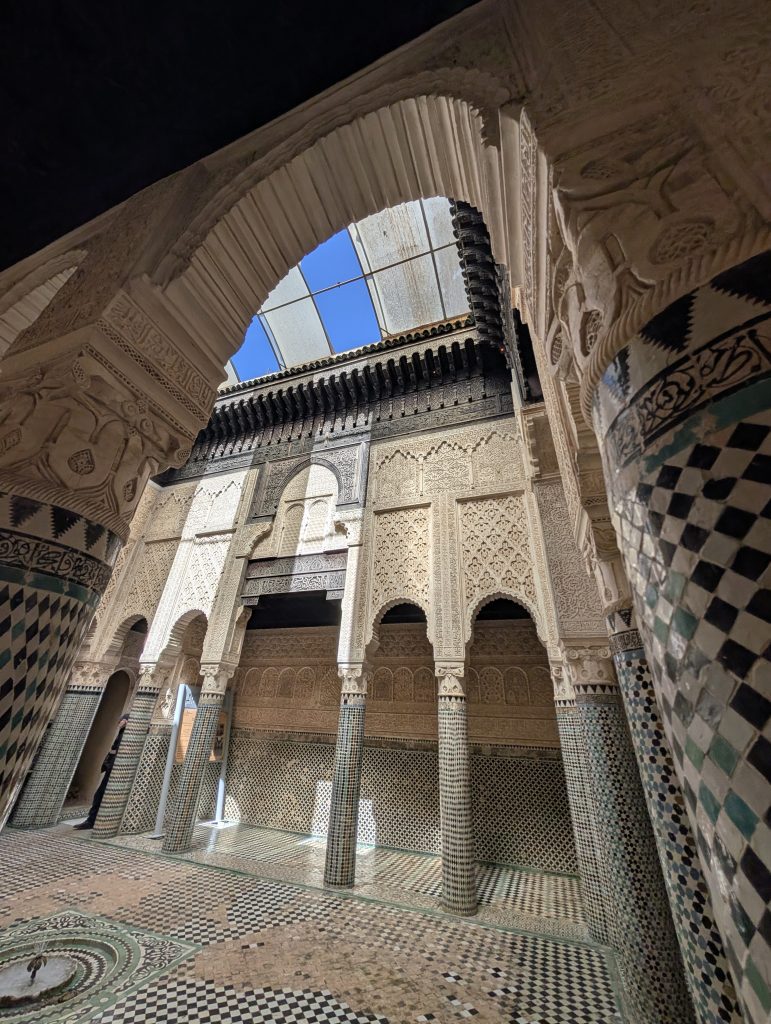
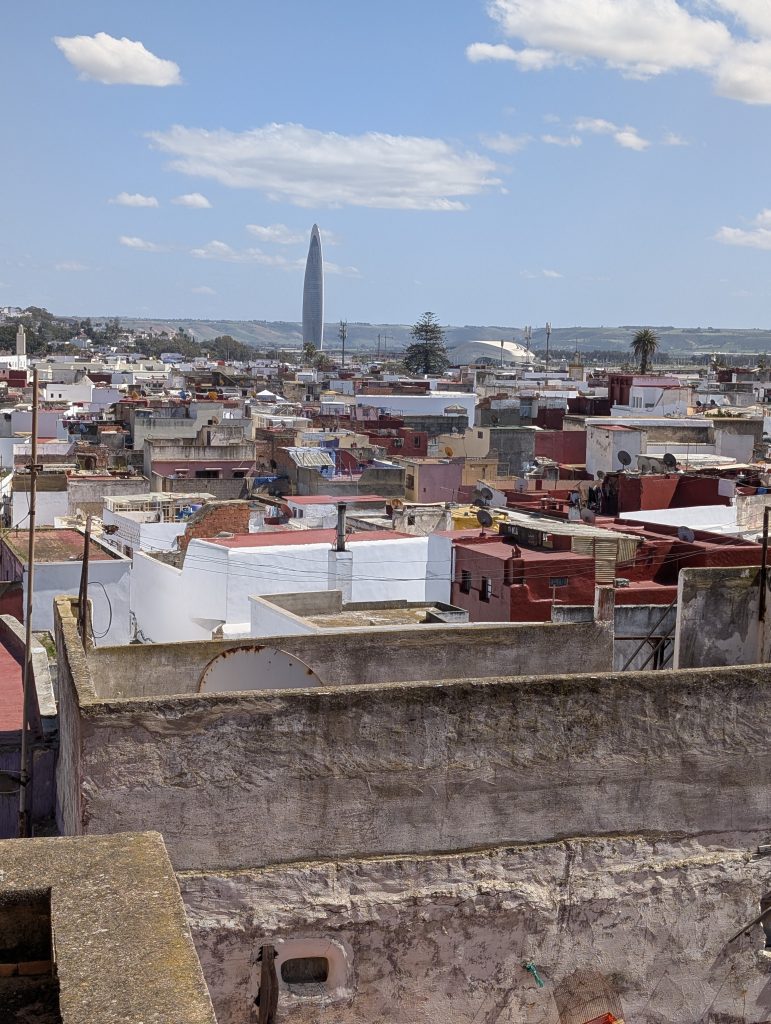
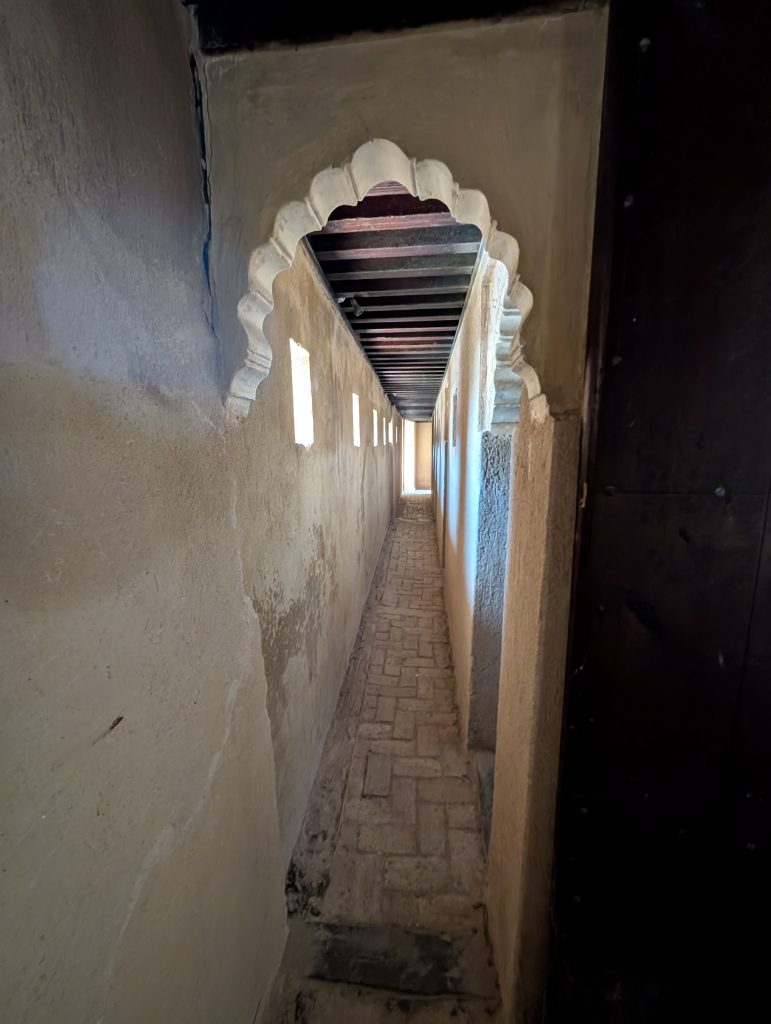
There is a massive Muslim cemetery that sprawls along the Atlantic Ocean seafront inside the city walls. Sidi Ben Achir Cemetery is situated on prime real estate. It is named for a holy man whose mausoleum is nearby. He died in 1364. I wasn’t aware that non Muslims are not supposed to enter the cemetery but there were no guards so I was able to get some lovely photos. The cemetery is huge and many of the headstones are yellow.
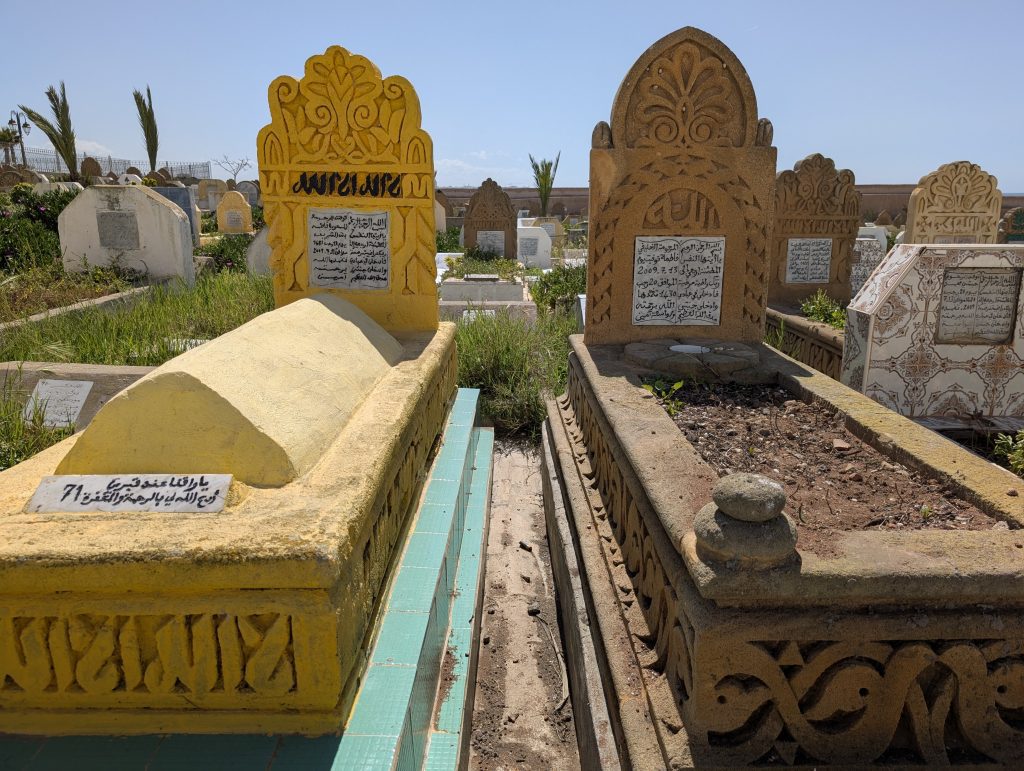
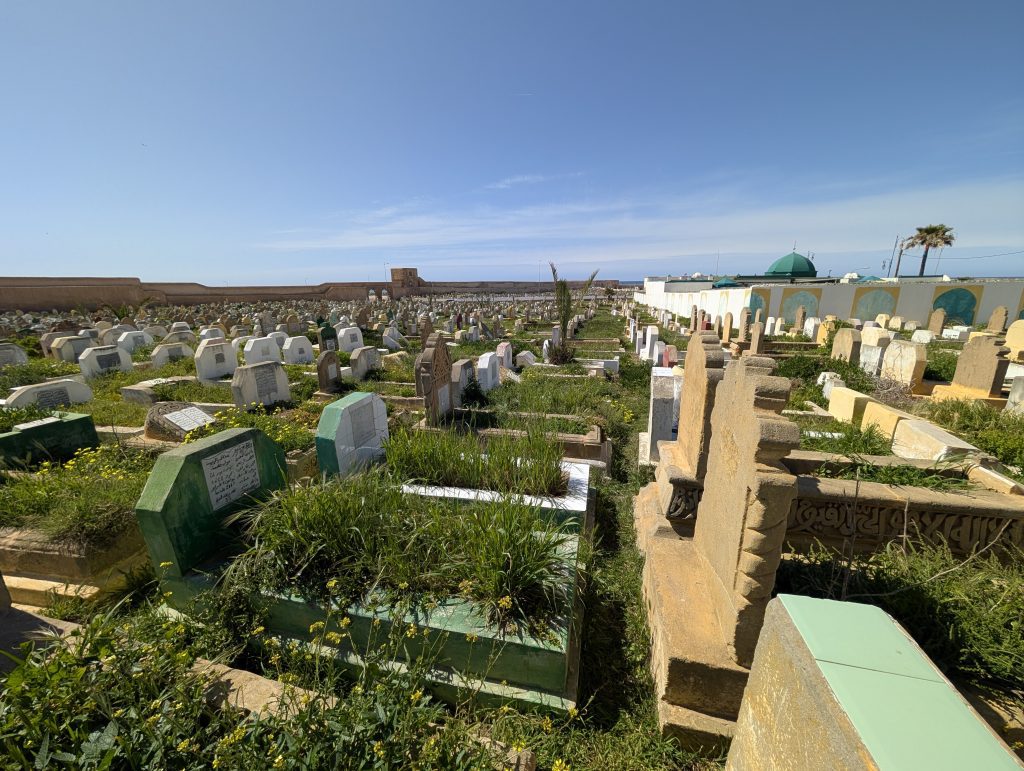
The city of Sale borders the Atlantic Ocean. There are huge walls that line the cliffs overlooking the water. From where I walked you could peak through openings in the walls but there is also a path down to the water where many people were walking.

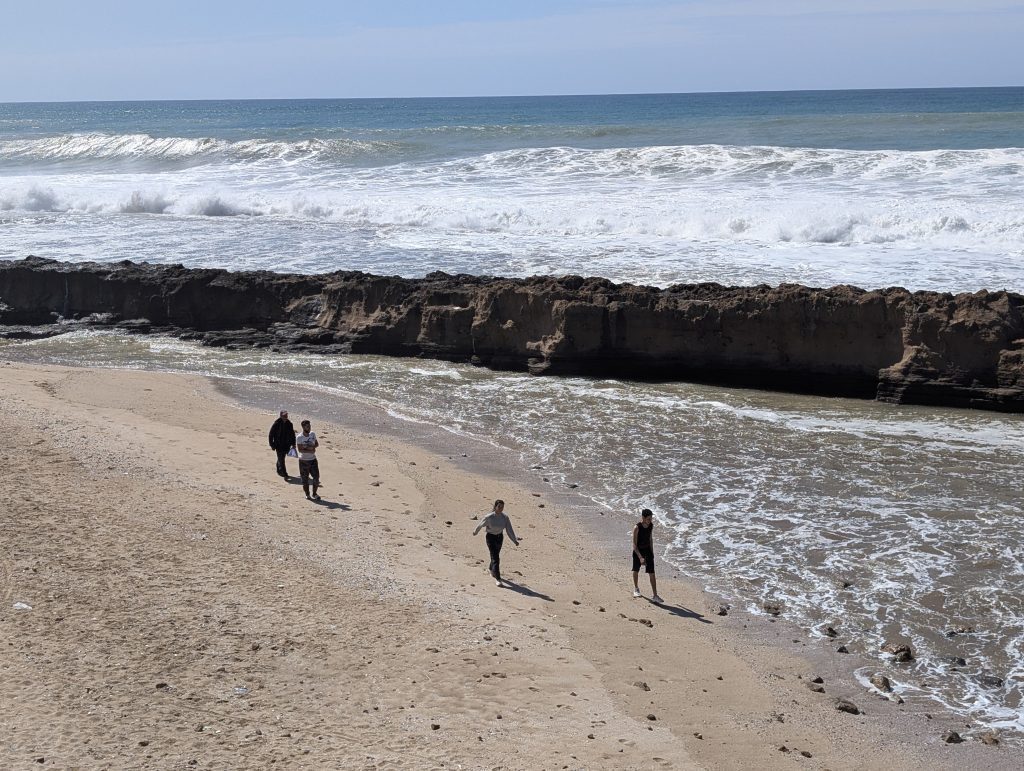
I wandered through the Sale Medina looking for lunch. I saw no tourists. All the women were covered head to toe. Ended up getting a personal pizza for $2.50.
Still no sign of Pat. Had dinner offered by the Riad, a five course vegetarian meal that included a beet burger, eggplant wraps, and a selection of Moroccan salads. I saved some for Pat who finally arrived at 10pm after a 30 hour trip. Enjoyed chatting with an American family from Wisconsin who was spending the winter and spring in Europe, home schooling their boys and Dad working remotely.
April 4
We started our Friday in Morocco with a windy breakfast on the rooftop of our Riad. Our morning exploring was walking through the Medina. Fridays are a holy day in Morocco and many sights are closed. But there was lots of activity as locals were out shopping and food vendors were open. We ended up at the tram station just outside the Medina walls. For $.60 we could ride to the end of the route. We went to a telecom shop to try and get a local sim card for my phone. My new phone from T-Mobile had terrible service for most of the trip. The employees at the store didn’t speak English. Eventually they sold me a $2 sim card that had no data plan and then I had to get my phone unlocked. I did buy some data from a kiosk but that didn’t last long. Next time it’s probably better to do some research and buy card and data at the airport.
We took the tram across the river to Rabat before moving our luggage to the Gate1 hotel, Dawliz. Lovely hotel facing the river.
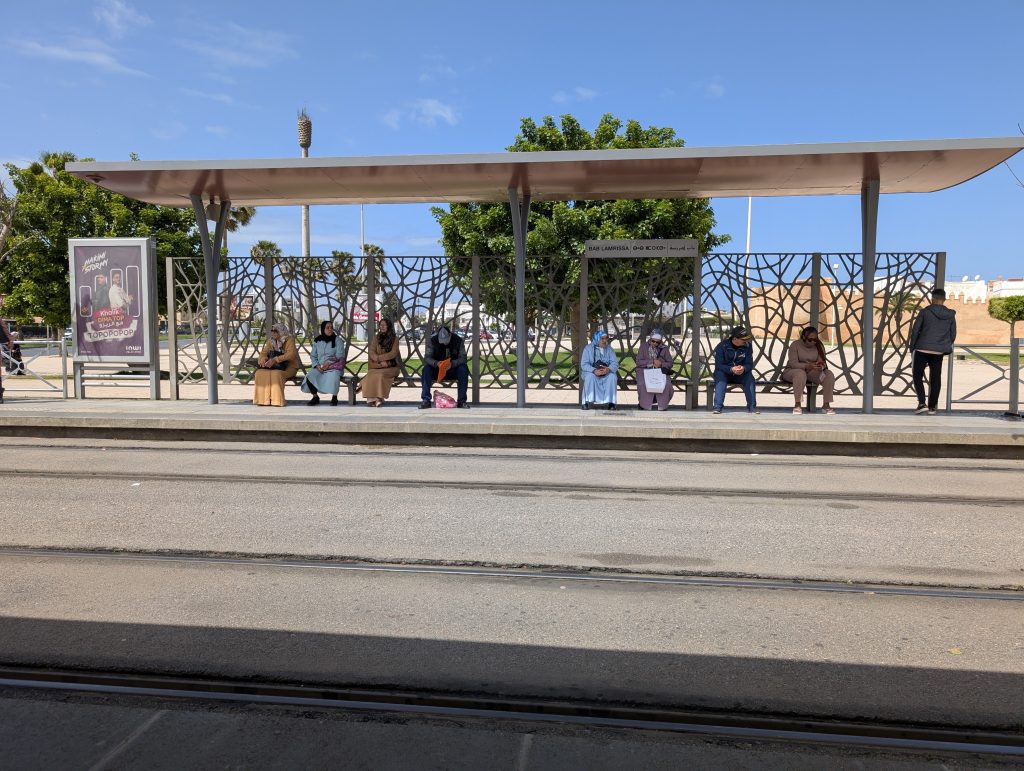
We met up with our 38 travel companions and tour guide Choquee for dinner. It should be an interesting trip. We don’t have to worry about any logistics other than what to do with our free time. Most of the people on this trip have been on many, many Gate1 tours.
April 5
Our tour group saw the highlights of Rabat, traveling by bus. Highlights included:
Presidential Palace grounds where we learned about the Moroccan monarchy and their government structure. The present king descends from a dynasty who has ruled for 500 years. This palace is one of many throughout the country.
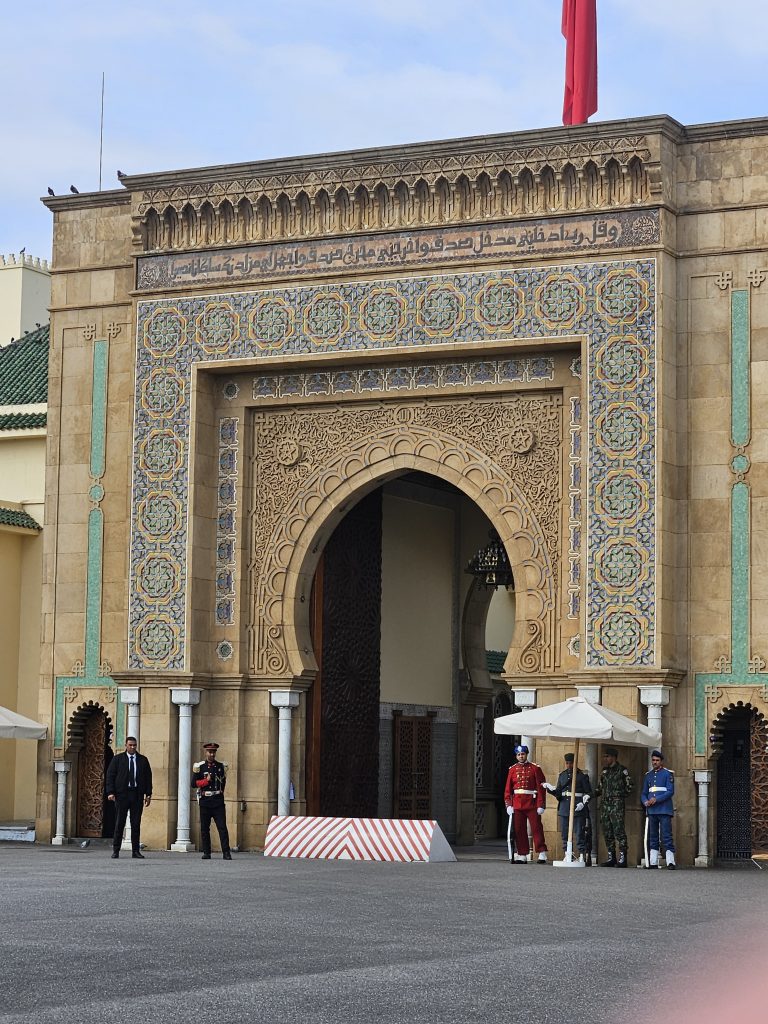
Chellah, an ancient Muslim necropolis and archeology site overlooking the Bougreg River. We didn’t go inside but walked around the stone ramparts for some amazing views.
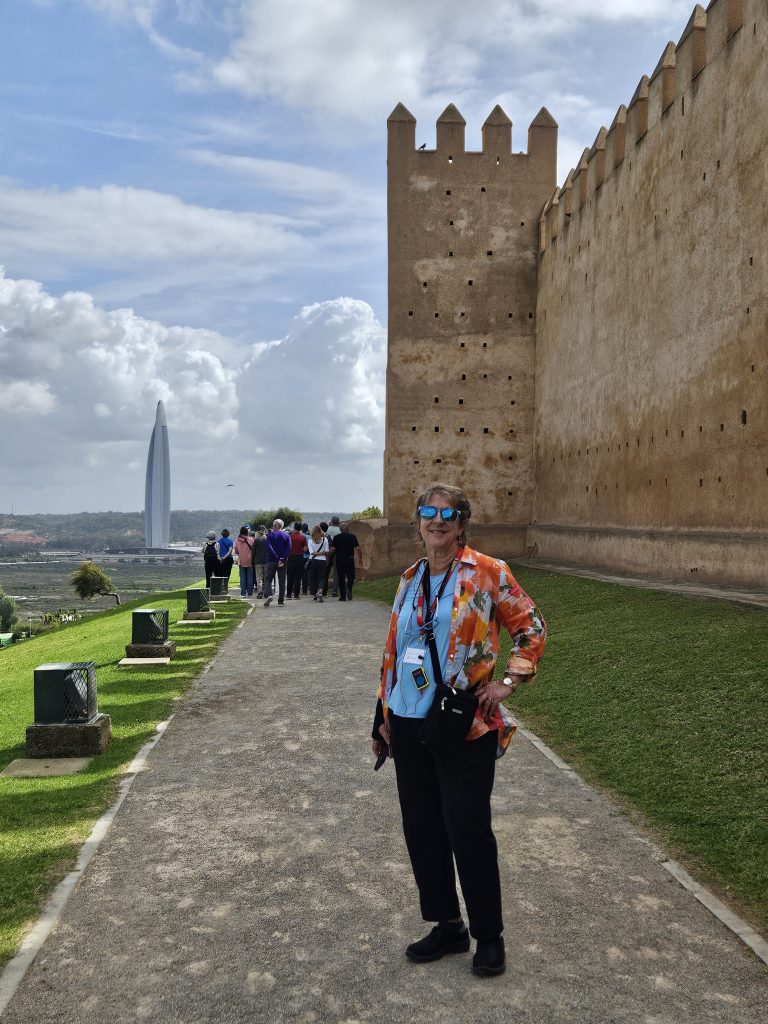
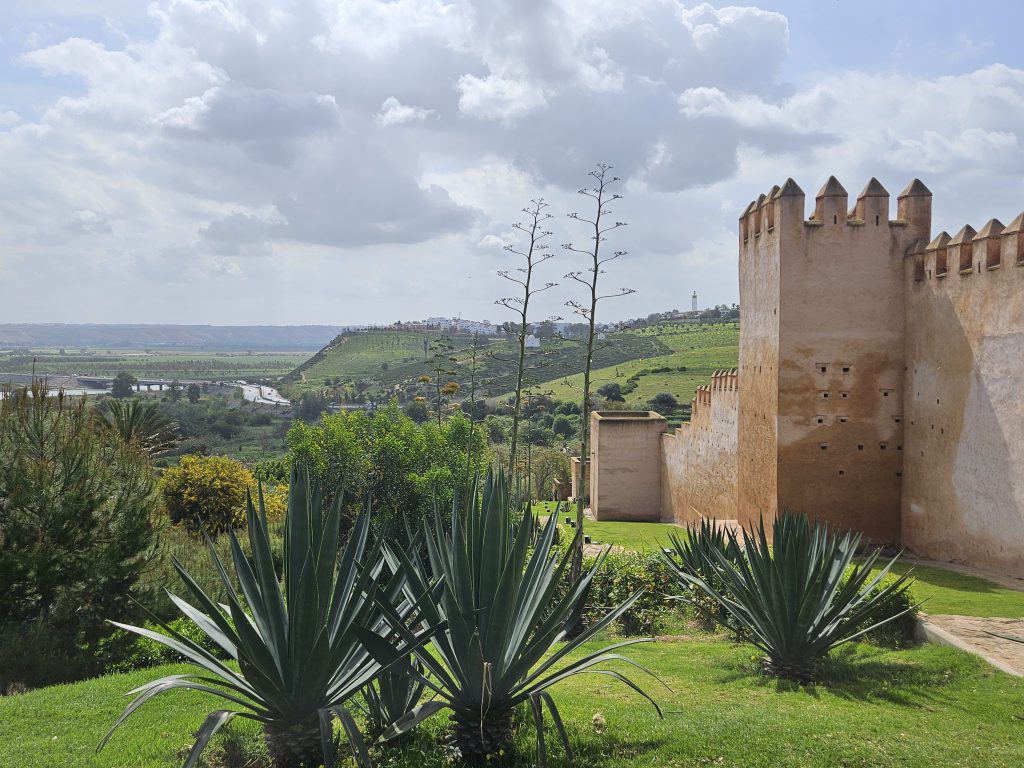
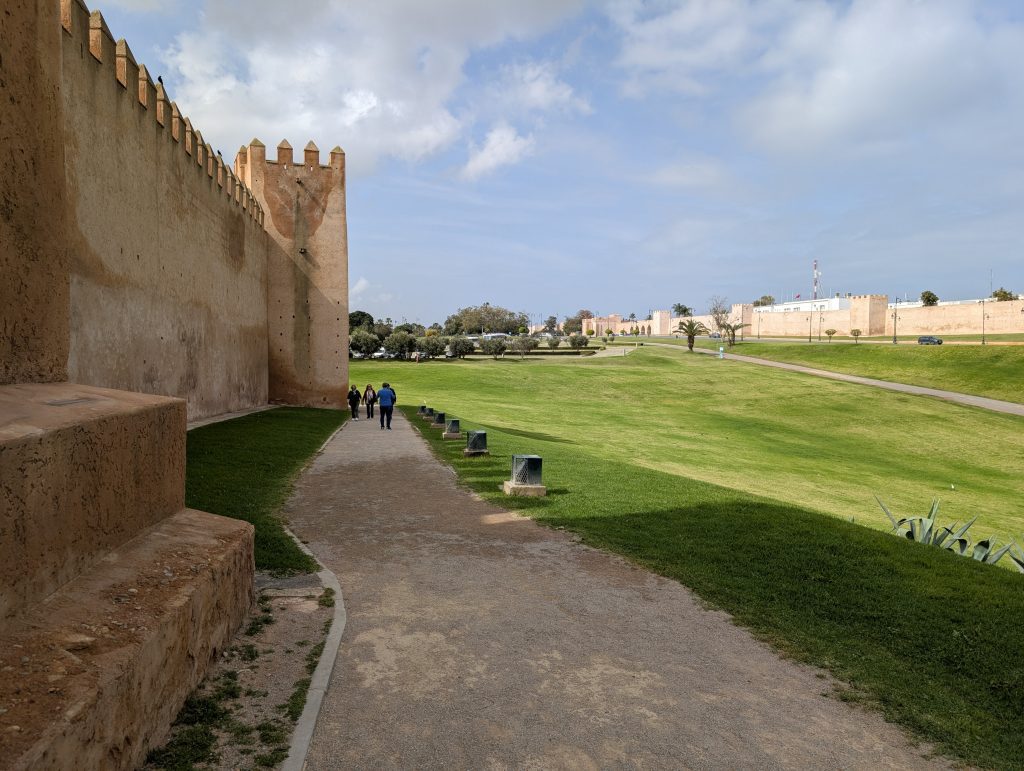
Hassan Tower and Mausoleum is one of Rabats important historical and tourist sites. The tower is a 44 foot high remnant of the minaret that was going to be part of a mosque that was built in the 12th century. The complex was never finished because its sponsor, the Sultan of the Almohad dynasty, died in 1199, leaving 348 columns and some of its walls. Adjacent is a mausoleum that houses the tombs of the current royal family.
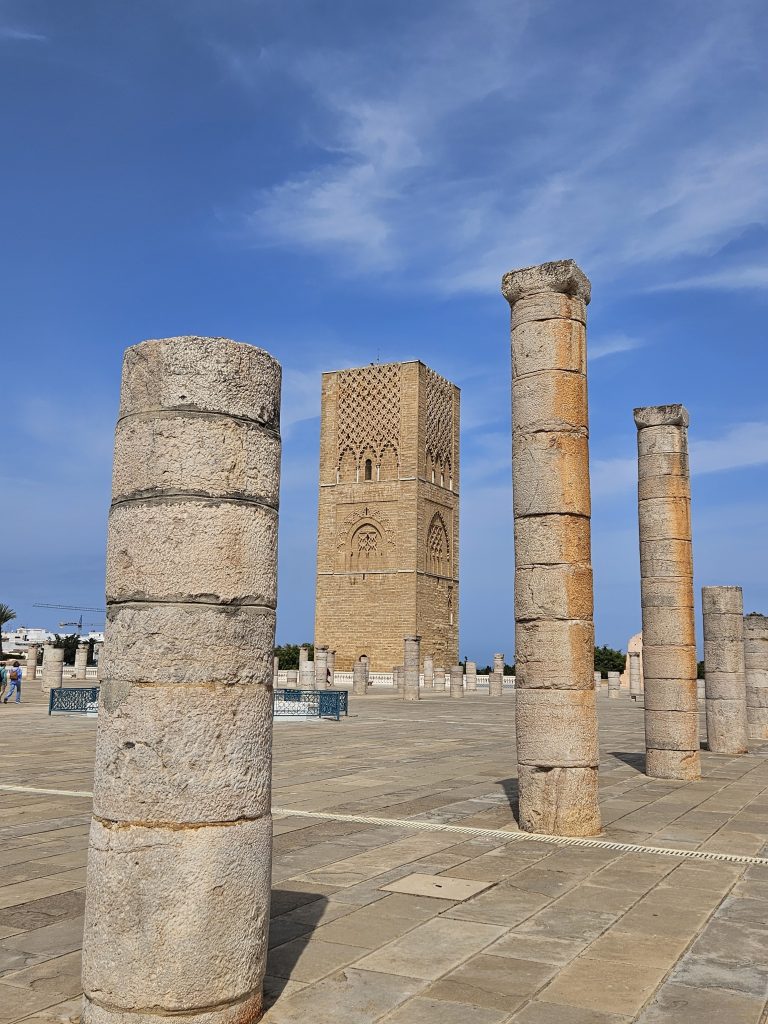
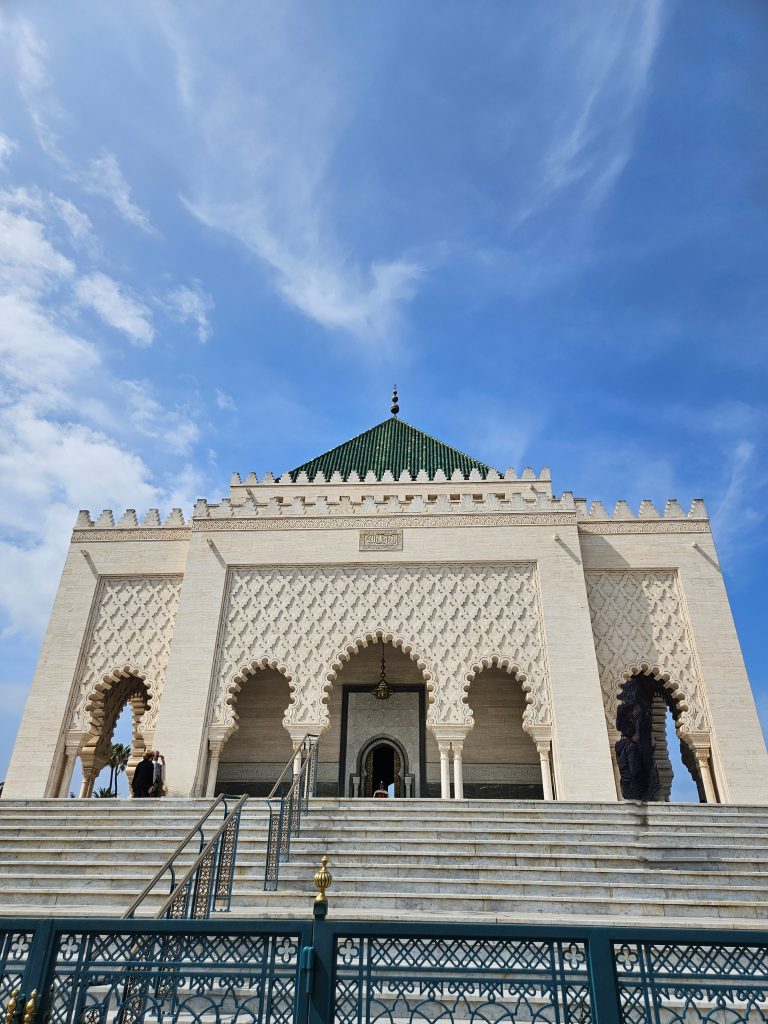
Kasbah of the Udayas was a pleasant surprise. It is another UNESCO World Heritage site in Morocco. In the 12th century, the caliph of the Almohad dynasty built a citadel as well as a palace and a mosque on this site overlooking the river. The subsequent centuries saw additional construction and expansion of this historical site. In 1913 the area was renovated by the French Protectorate who were occupying Morocco at the time. Today The Kasbah is a popular tourist attraction with its whitewashed buildings and iconic doors, spectacular views, lovely gardens and a jewelry museum. As we were leaving, we could hear the call to prayer and the faithful were heading into the El-Atika Mosque.
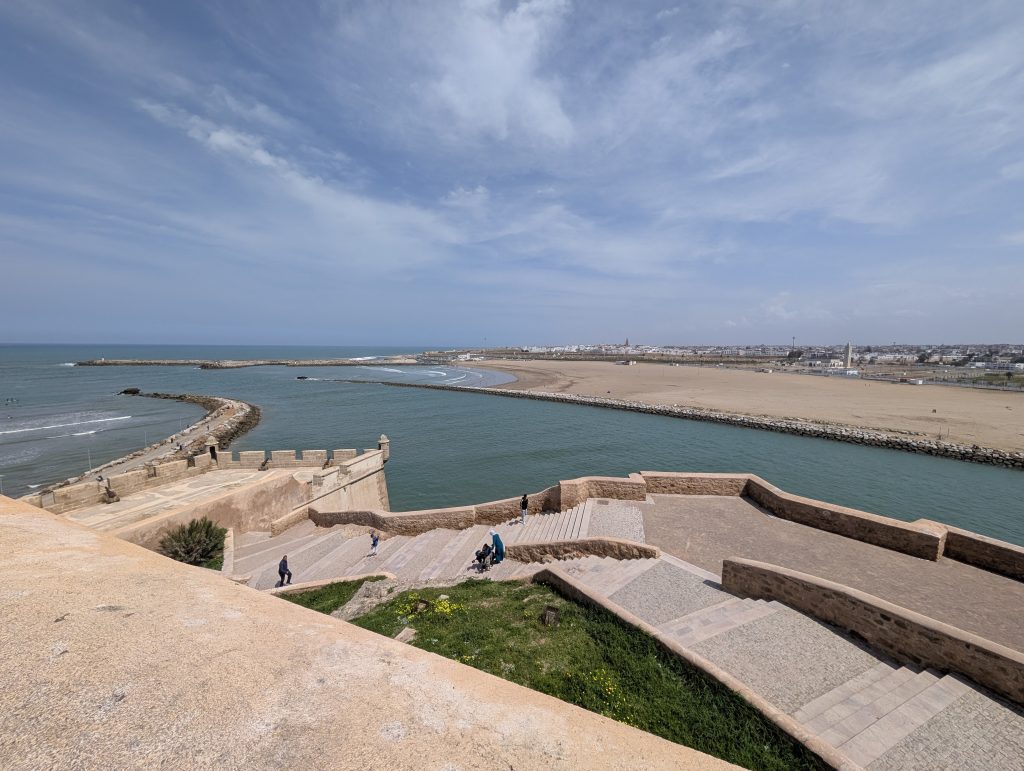
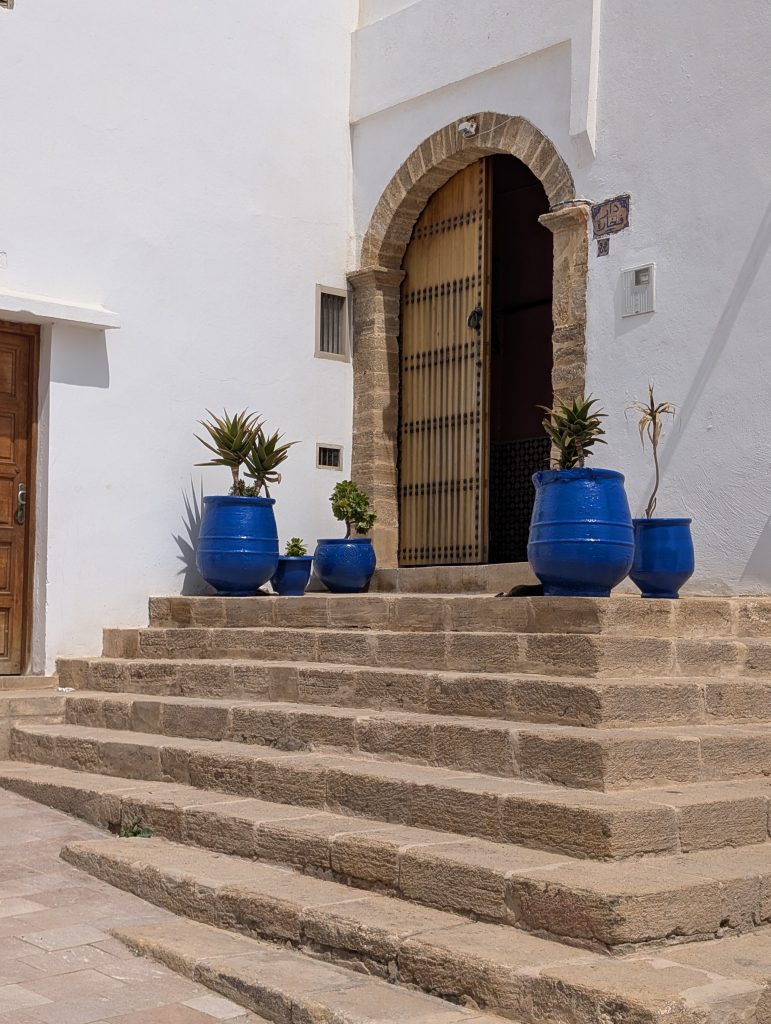
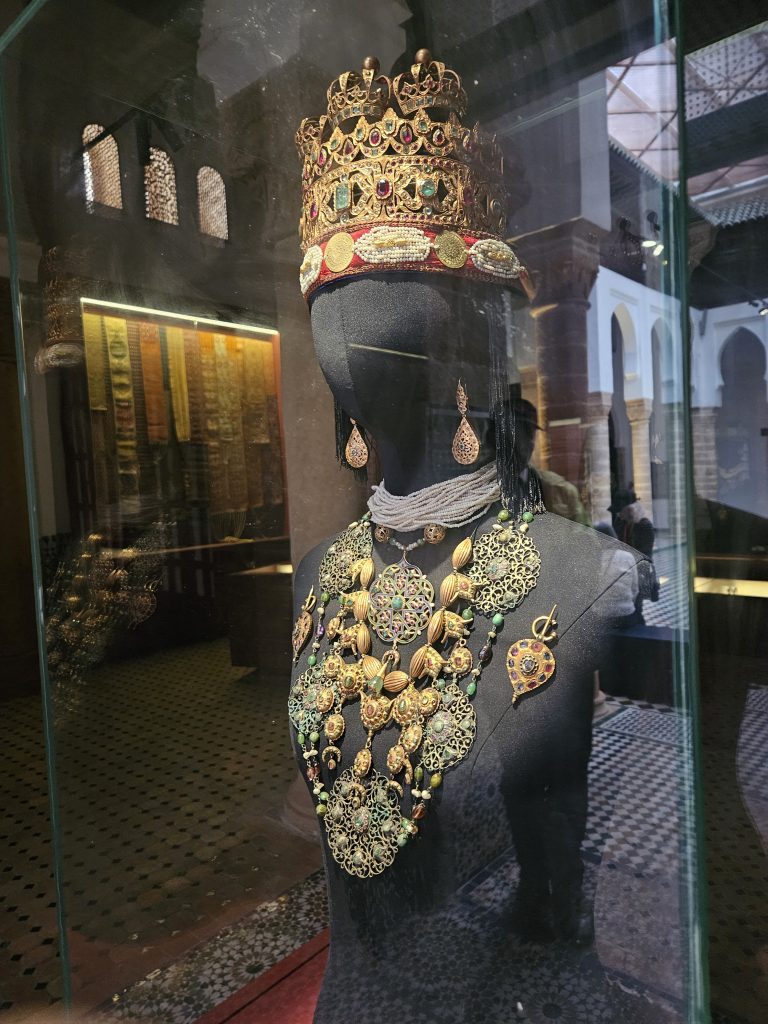
The Kasbah is known for its entrance gate. The Bab Oudaya is known as the Great Gate of Kasbah and is considered one of the most beautiful gates of Almohad and Moroccan architecture. The gate is located up the stairs to the left in this photo.
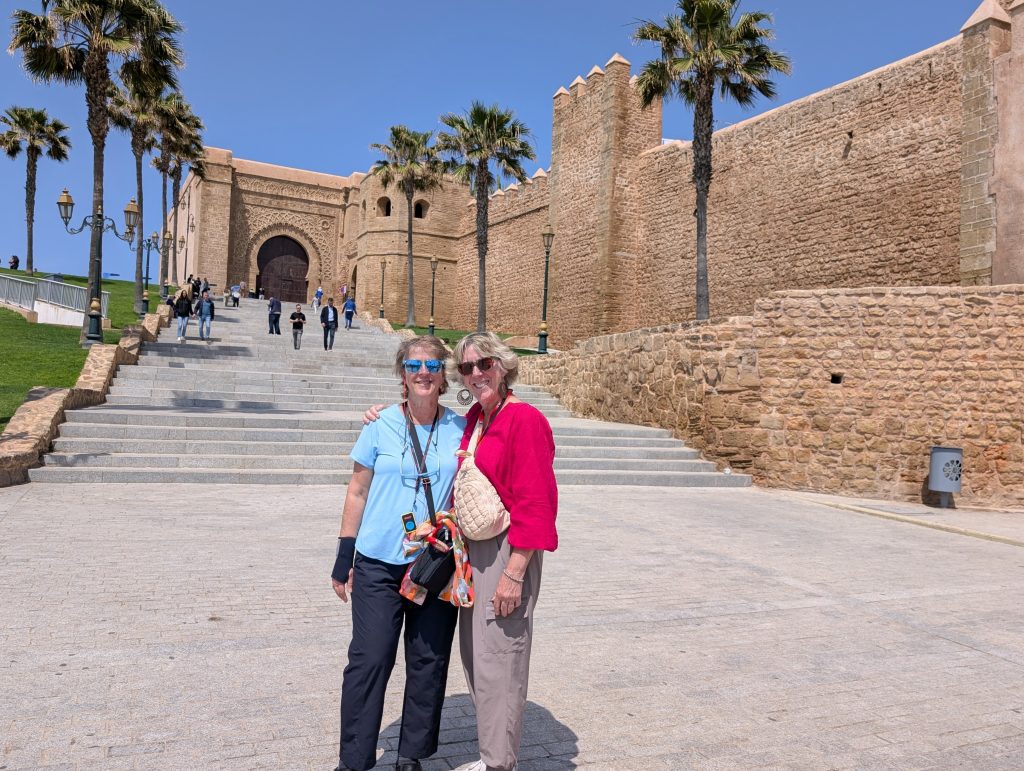
Our tour continued through Sale where we had a lunch at the Sale Marina and then we were dropped off in the center of Rabat. Pat and I walked to the Central Market but we never did find the Rabat Medina. There wasn’t much of interest in the market, though we did see a man carrying a whole cow on his shoulders, unsuccesfully looking for a butcher shop to buy the meat.
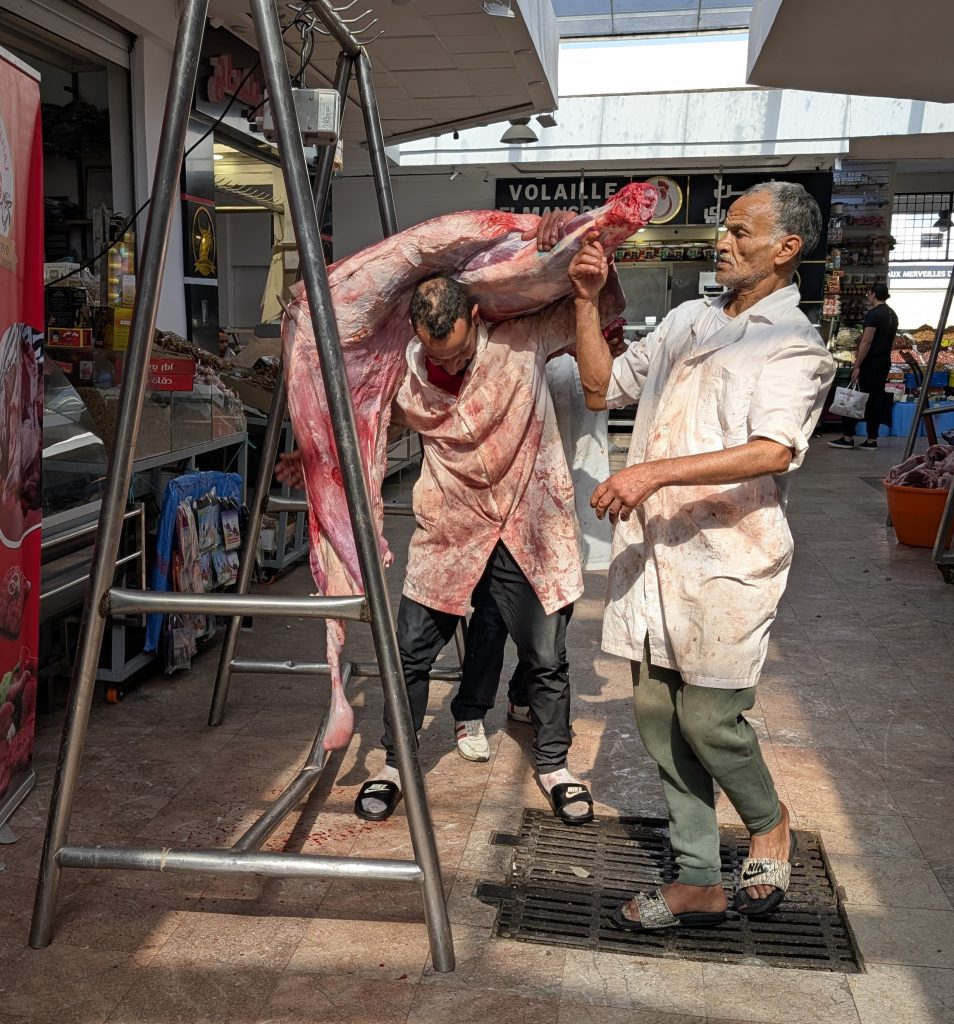
Pat, Robyn and I had a lovely happy hour and dinner back at the Dawliz hotel, sitting on the terrace overlooking the river. We could see the bridge that connects Sale to Rabat as well as a performance center directly across from us.
